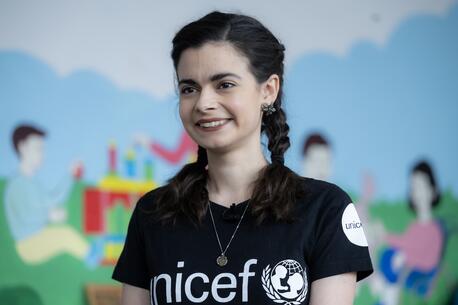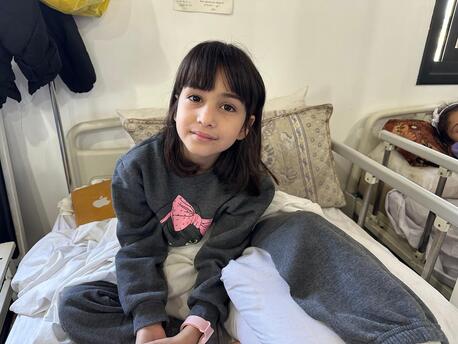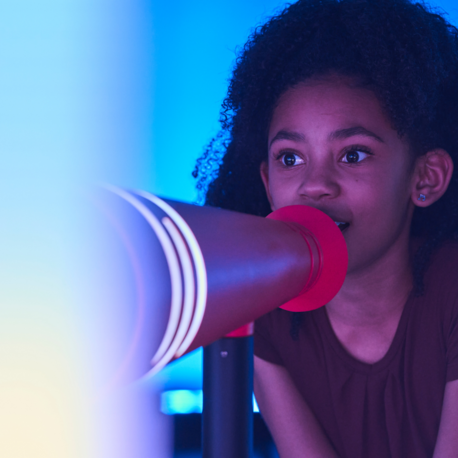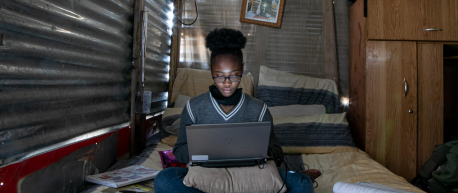
21st Century Moonshot: Reimaging Education by Connecting Every Learner
In late November, UNICEF USA and the Center for Global Education at the Brookings Institution brought together UNICEF experts in the fields of education and connectivity for a virtual briefing on “Preventing a COVID-19 Learning Catastrophe: Investing Urgently in Quality Learning & Digital Access.”
Investing in education is the best investment governments can make. — UNICEF Executive Director Henrietta Fore
From the start, moderator Rebecca Winthrop of the Brookings Institution made it clear to all attendees, “There’s no silver bullet anywhere in development, but if there was one it would be education.” Throughout this pandemic, Brookings has joined UNICEF in exploring how global education can emerge stronger post-pandemic and how education technology can be leveraged in this current moment to improve learning access and outcomes for all.
Leapfrogging Education into the Future
COVID-19 has been one of the largest education disrupters ever seen. As of today, about a quarter of a billion learners still have not been able to return to school. Even prior to the pandemic, the world was experiencing a learning crisis. While countries work to safely reopen schools, as of November, 527 million students — about a third of total global enrollment — were still affected by school closures.
UNICEF Chief of Education Robert Jenkins declares this a once-in-a-lifetime opportunity to leapfrog education into the future, taking a fresh look at learning to ensure it is tailored to local contexts and student interests, enabling children and youth to gain skills that will prepare them for the 21st century workforce. Connectivity is key to overcoming the digital divide and UNICEF is working with partners to build and accredit a whole range of digital learning solutions to maximize impact.
Power of Partnerships: Microsoft’s Learning Passport
Microsoft’s Vice President of Tech for Social, Justin Spelhaug, knows that COVID has turned education on its head but believes that with every disaster there is an opportunity. If that opportunity is leveraged to change the quality of education permanently, it will be a force multiplier for development.
The Learning Passport was born out of co-creation with UNICEF and optimized for both low- and no-bandwidth contexts. It is a platform enabling high quality, flexible learning in an offline environment for children who lack access to mobile or broadband, including children in humanitarian emergencies or impoverished, rural settings. Through UNICEF’s longstanding work in countries across the globe, the Learning Passport’s technology can be successfully implemented to deliver solutions for young people.
Accelerating Progress through the GIGA Initiative
As Co-Founder Sunita Grote explains, GIGA is an innovative partnership model to bring connectivity and bridge the digital divide. GIGA, launched by UNICEF and ITU in September 2019 to connect every young person to the internet, has been instrumental in UNICEF’s immediate response to COVID-19 to reimagine education and develop the skills that children have always needed, and particularly need now, during the pandemic.
In partnership with such industry leaders as UNICEF USA partner Dell Technologies, Giga advises on the best possible technical solutions to provide schools with connectivity and countries with safe, secure, reliable, fit-for-purpose infrastructure to support future digital development needs.
Connectivity is the underlying element of all the Sustainable Development Goals, bringing value across economic and social indicators. Connectivity demonstrates shared alignment between the public and private sector where economic prosperity and flourishing livelihoods are not only fundamental for children’s growth and development but necessary for global markets’ long-term success.
GIGA has three aims:
- Map every school and connectivity in real time. Through Projectconnect.world, anyone can concurrently view 800,000 schools in 30 countries and their levels of connectivity access. GIGA leverages data made available through partnerships with governments and private sector partners as well as satellite imagery and machine learning to fill in data gaps and map “unknown” schools.
- Better allocate existing money and raise additional revenue to connect additional schools. GIGA recognizes the need to create a mixed, layered finance structure sourcing pledges from public donors to raise private capital.
- Connect financing to government partner bids. GIGA looks at how to pool procurement at the national level with a focus on equity to reach every last learner.
For example, in Kyrgyzstan, UNICEF’s Country Office leveraged GIGA to help the national government save 40% of its education connectivity budget by providing tools to hold certain internet service providers to account and identify gaps in service delivery.
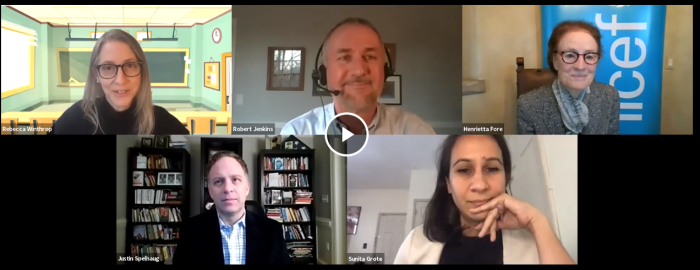
Leveraging Digital Solutions to Eliminate Gender Gaps
In regions like sub-Saharan Africa and East Asia, a gender digital divide significantly disadvantages girls. Another upshot of technology platforms like the Learning Passport is that girls can benefit from tailored support in STEM. Digital learning solutions not only provide customized content to overcome gender specific barriers, but the tools themselves can help to more end systematic biases in education.
Greater digital access presents both opportunities and risks. UNICEF has been at the forefront of online child protection. GIGA is using buy-in from heads of state and ministers of education and ICT to bring key stakeholders together and accelerate progress for online child protection. This includes support for newly launched ITU guidelines on how regulators and internet service provides can build child online protection recommendations into existing services.
Call to Action- More Investment Needed to Accelerate Progress
In her role as UNICEF Executive Director, Henrietta Fore makes clear: “Investing in education is the best investment governments can make.” Education is the great equalizer and the best lever out of poverty.
However, to accelerate progress, collective action between all stakeholders is required: the public sector, the private sector and organizations like UNICEF. More catalytic funding is needed and innovative financing models must be taken up.
Fortunately, investing in education and connectivity is good for business and good for economies. COVID-19 presents an opportunity to reimagine education. Now, to ensure every child is able to learn and reach their full potential, it takes all of us to lean in and achieve something at scale.
Top photo: On 16 August 2020, Sebabatso Nchephe, 18, takes online classes and develops projects on her laptop, at home, a two-room house she shares with her mother and two sisters in Ivory Park, an informal settlement on the outskirts of Johannesburg, South Africa. Sebabatso is a participant in Techno Girl, a UNICEF-supported job shadowing programme for girls from grades 9 to 11. Techno Girl strengthens girls’ learning in technical fields, so that they have the training they need to compete for jobs supported by the digital economy in the public and private sectors. © UNICEF/UNI363429/Schermbrucker
